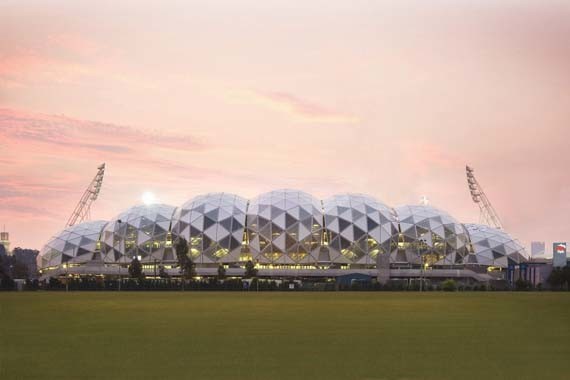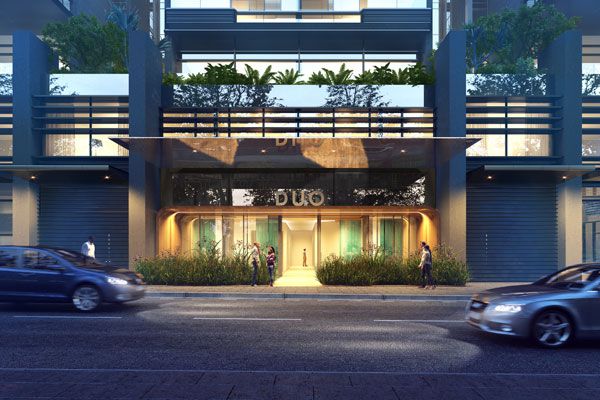The Melbourne Rectangular Stadium (also known as the Melbourne Soccer Stadium) is an outdoor sporting stadium officially named AAMI Park during its sponsorship deal with AAMI insurance.

March 25th, 2022
Having been officially open since 2010, the Melbourne Rectangular Stadium is located approximately 1km east from Melbourne’s CBD in the Sports and Entertainment Precinct on Olympic Boulevard.
The stadium regularly houses both domestic and international events, such as the 2015 AFC Asian Cup, the 2010 and 2014 Rugby League Four Nations, and the National Rugby Championship. AAMI Park has also hosted multiple concerts, including the Foo Fighter’s Wasting Light tour (the venue’s first concert), as well as Taylor Swift’s 1989 tour in 2015 and Elton John in 2020. For the past few years, the venue has been the site of Monster Jam, a professional monster truck driving competition. Initially announced and proposed by the Victorian Government as a 20,000-seat stadium, pressure from soccer club Melbourne Victory saw AAMI Park’s capacity increase to a little over 30,000.
Address: Olympic Blvd, Melbourne VIC 3000

AAMI Park was primarily designed and overseen by Patrick Ness (Design Director) and Jonathan Gardiner (Project Director) of Cox Architecture. Find an interview with them on the AAMI website here where they discuss the inspiration for the project and their design goals, such as; innovating structure by reducing the amount of steel needed, creating an atmospheric and iconic design for sports fans to remember, and creating an artistic tribute to Melbourne’s unique sporting precinct.
The stadium is well known for its distinctive design, with the multiple geodesic roof domes creating a bio-frame that provides shelter form rain, insulation and sun protection for spectators. The nature of the roof’s wireframe design means that this cover is provided without having to sacrifice space to pillars or other support structures, meaning that the spectator’s view is completely unobstructed by the building’s frame. External LED lights on the roof turn the stadium into a breathtaking spectacle when activated. The stadium was designed in accordance with principles of shell theory, which meant the project was efficient enough to use around 30% less steel than the majority of other equivalent stadiums.

The AAMI stadium cost around $267.5 million to build. The stadium took approximately three years of construction work between the 2007 commencement date and its 2010 completion, withCox Architecture’sinnovative design proving somewhat challenging for contracted engineers Development Victoria (Arup) and Grocon builders. The frame of the building was made of predominantly steel (2,500 tonnes in the roof shell frames) and aluminum (40kmh in roof framework), while other building materials included concrete (35,000 cubic metres), cladding (20,000 square metres) and concrete reinforcing steel (4,000 tonnes).

On opening night in 2010, a mishap with unexpected bad weather led to certain sections of the stadium roof leaking. It was found that parts of the roof still required guttering and drainage construction and some sections were unfinished, a fact which would have made no difference to spectator if not for the torrential rain. A few hundred people were soaked by the downpour and unable to move seats due to capacity demands. The leak was contained to the stadium’s western wing.
Despite that the roof has since been completed, one of the most common questions about the AAMI Park Stadium is which seats will be undercover. The answer is: generally, most of the seating area is indeed undercover and protected from the weather. However, the seats closest to the sideline are more likely to be subject to bad weather conditions and limited shelter. It is difficult to predict exactly which seats are unprotected due to the unusual shape of the roof. An alternative route to ensure the conditions of spectatorship might be snagging seats in a corporate box, of which the Aami Park has 24.

AAMI park has received international recognition as an iconic staple of modern architecture. In 2008, before the stadium was even completed, it was named winner of the international Bentley Award due to the innovative use of parametric modelling in devising a 3D generative component model with sophisticated pedestrian simulation tools. Some of many other awards include:

After closing to the public during the Melbourne lockdowns, AAMI Park is now open once again and committed to following COVID-19 compliant guidelines for safe events. It is now a card-only venue and guests are required at all times to comply with public health mandates. Tickets are mobile-only and can be stored in Apple Wallet, the Ticketek app or a Ticketeck account.
Currently, the stadium is only open to those who can provide proof of full vaccination or a medical exemption (note: this rule is for all over-16s). Parking at the AAMI stadium can be difficult and it is suggested that guests pre-book as drive-in parking spots are limited. The stadium is very close to public transport, with both tram and train stations within walking distance. The majority of patrons prefer to arrive this way. As the stadium is so close to the CBD, there are numerous luxury and budget hotels nearby.
The stadium hosts the Olympic Park Sports Medicine Centre and is home to multiple major football clubs, such as; Melbourne Storm (NRL), Melbourne Victory (A-League), Melbourne City FC (A-League) and Melbourne Rebels (Super Rugby). Some notable performers who have held concerts at the Melbourne Rectangular Stadium are; Ed Sheeran, Bruce Springsteen, and Paul McCartney.
The AAMI Park sports facilities include a large gym, multiple changing rooms, pools, treatment rooms and even office spaces. For the patrons, facilities include food and beverage outlets (as many as fourteen bars) and a 1,100-capacity dining room.

Melbourne’s Sports and Entertainment Precinct has just been through Stage 2 of a major redevelopment project accounting for the rising popularity of the Australian Open. The redevelopment is focused on providing better facilities for patrons, particularly emphasizing accessibility of public transport and shade, and improving seating capacity. Stage three involves a new show court and arena, function and media centre, central terrace and outdoor public space. Have a look at the specifics here.
INDESIGN is on instagram
Follow @indesignlive
A searchable and comprehensive guide for specifying leading products and their suppliers
Keep up to date with the latest and greatest from our industry BFF's!

The undeniable thread connecting Herman Miller and Knoll’s design legacies across the decades now finds its profound physical embodiment at MillerKnoll’s new Design Yard Archives.

CDK Stone’s Natasha Stengos takes us through its Alexandria Selection Centre, where stone choice becomes a sensory experience – from curated spaces, crafted details and a colour-organised selection floor.

London-based design duo Raw Edges have joined forces with Established & Sons and Tongue & Groove to introduce Wall to Wall – a hand-stained, “living collection” that transforms parquet flooring into a canvas of colour, pattern, and possibility.

For Aidan Mawhinney, the secret ingredient to Living Edge’s success “comes down to people, product and place.” As the brand celebrates a significant 25-year milestone, it’s that commitment to authentic, sustainable design – and the people behind it all – that continues to anchor its legacy.

Joint venture partners, Frasers Property Australia and Sekisui House Australia, are set to launch DUO November 28, the highly anticipated next stage at the $2 billion mixed-use urban village, Central Park.

Jasmax merges with Melbourne’s Canvas Projects to expand in Australia, following its 2022 Sydney launch and targeting Victoria’s public sector.
The internet never sleeps! Here's the stuff you might have missed

Australia’s first planted light rail corridor sets new benchmark for transport-led urban transformation.

For those who appreciate form as much as function, Gaggenau’s latest induction innovation delivers sculpted precision and effortless flexibility, disappearing seamlessly into the surface when not in use.